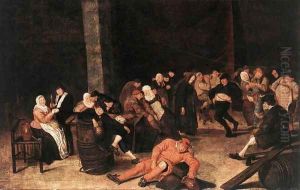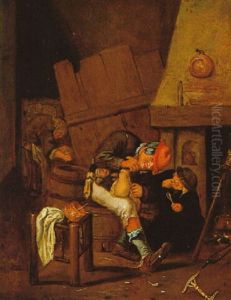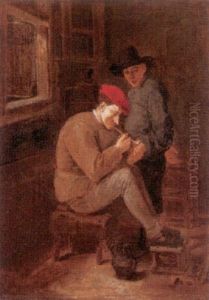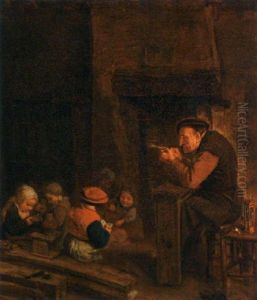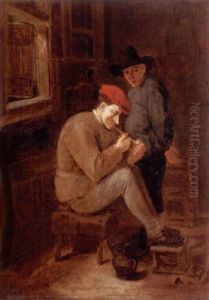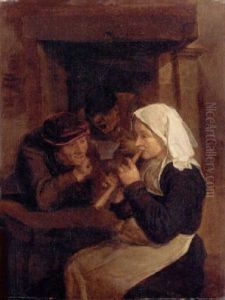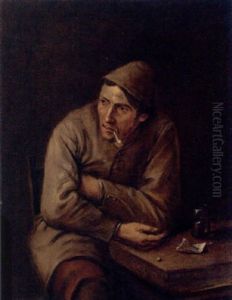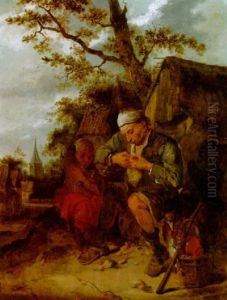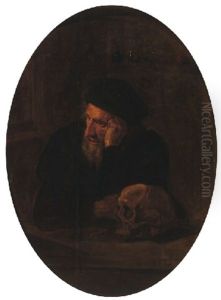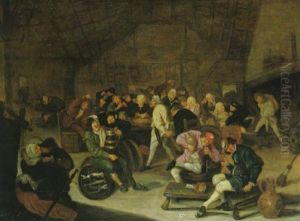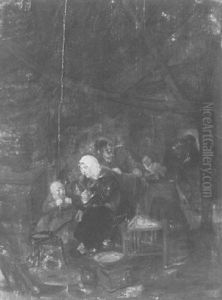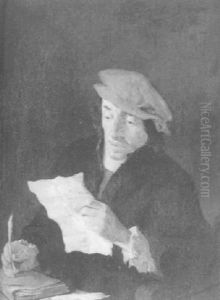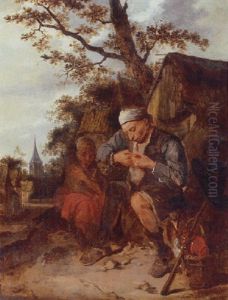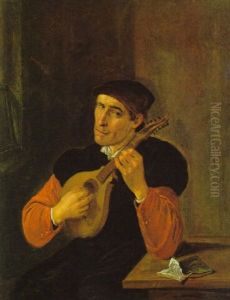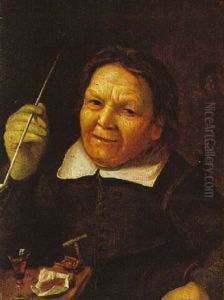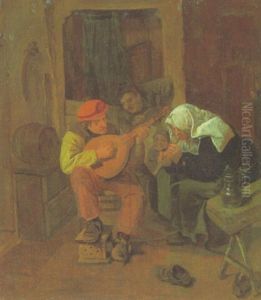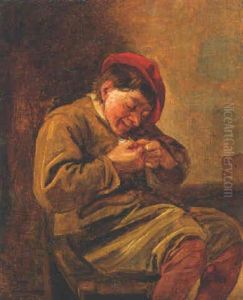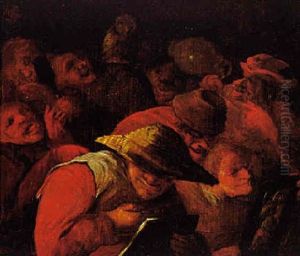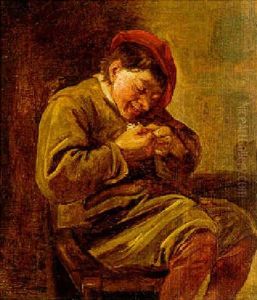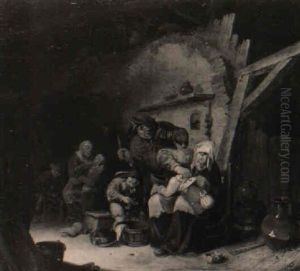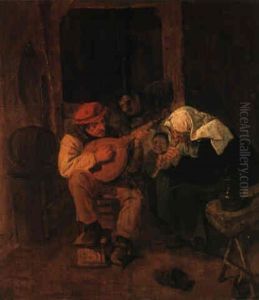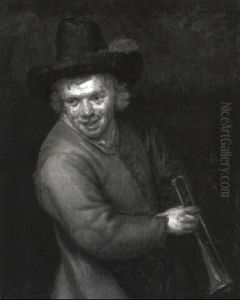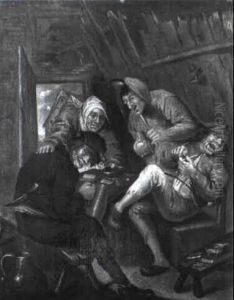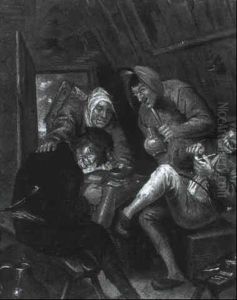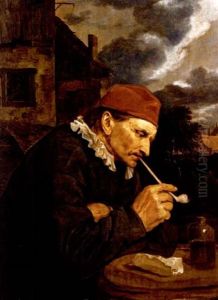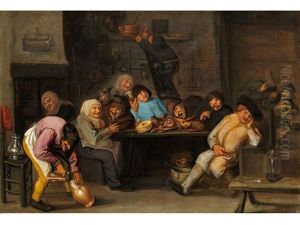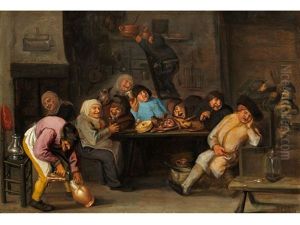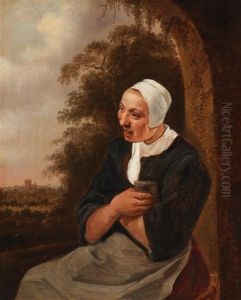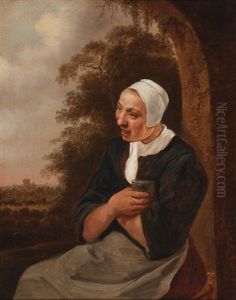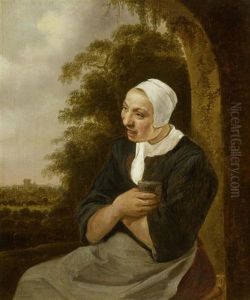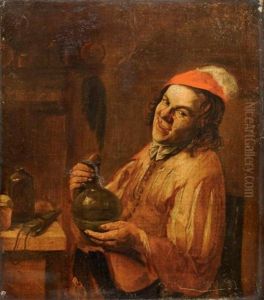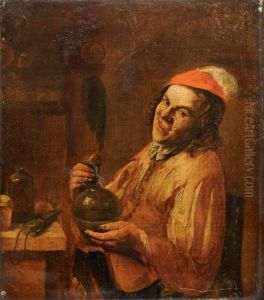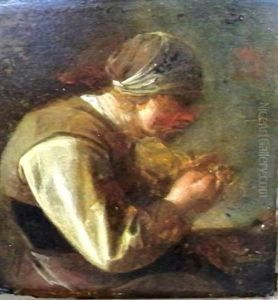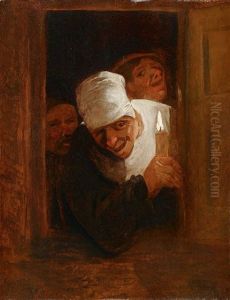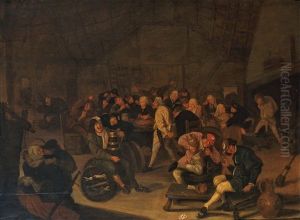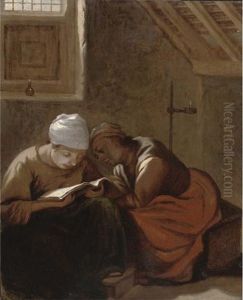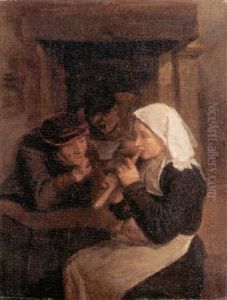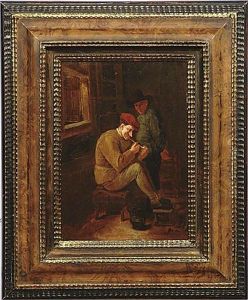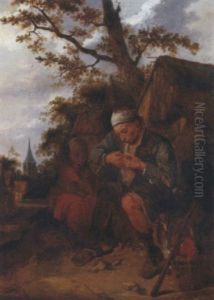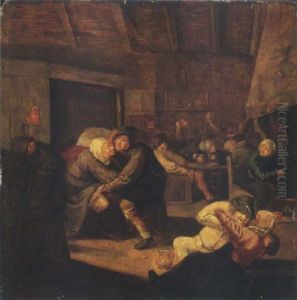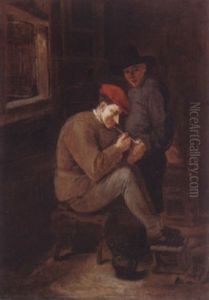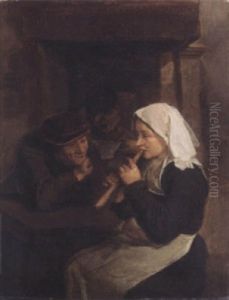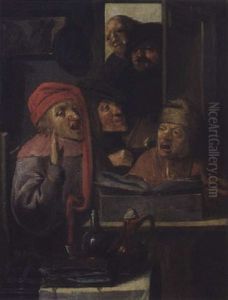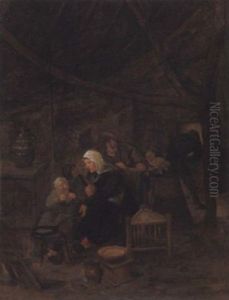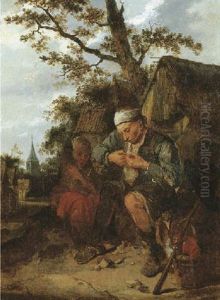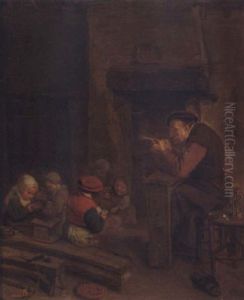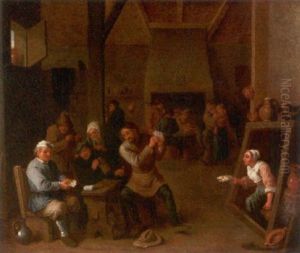Harmen Hals Paintings
Harmen Hals was a Dutch Golden Age painter, born in 1611 in Haarlem, Netherlands. He was the eldest son of the prominent and influential painter Frans Hals, under whom Harmen initially trained. The Hals family was a dynasty of painters, and Harmen's brothers, among them Frans Hals the Younger, Reynier, and Jan Hals, were also painters. Despite the shadow cast by his father's significant reputation, Harmen established his own career and developed a distinct style within the Dutch Golden Age tradition.
Harmen Hals is primarily known for his portraits, genre scenes, and historical paintings. While he was influenced by his father's loose brushwork and lively representation of subjects, his work is generally considered to be less vigorous and more restrained. Nevertheless, Harmen developed a respectable clientele in Haarlem and contributed to the city's artistic community, which was thriving during the 17th century.
Not as much is known about Harmen's life compared to his father, and his paintings were often overshadowed by the more famous Frans Hals. As a result, fewer works are confidently attributed to him, and his contribution to the Dutch art scene has been somewhat obscured over time. Records show that he was a member of the Haarlem Guild of St. Luke, a common professional association for artists of the time.
Harmen Hals' career declined in his later years, and he faced financial difficulties. This decline was part of a larger trend as the demand for the kind of portraiture that had made the Hals family successful began to wane towards the middle of the 17th century. Harmen Hals died in 1669 in Haarlem. Although his works are less sought after than those of his father, they remain a testament to the breadth and depth of talent that characterized the Dutch Golden Age of painting. Harmen Hals' paintings are housed in various museums and collections, contributing to the understanding of the period's artistic diversity.
